A tragic bond: The heartbreaking story behind two lives lost in Queensland’s road toll
Paramedics worked away on Ebonnie Smith. They were doing their job, trying to save her life. But to Constable Kara Tatt, who on that night in 2015 was attending her first fatal crash, it seemed impersonal. So she took the young girl’s hand, stroked her hair, and formed a bond that will never be broken.
QLD News
Don't miss out on the headlines from QLD News. Followed categories will be added to My News.
THE doctor was blunt in his assessment, as doctors sometimes are, because death is something that must be understood through the blinding shock and grief that goes with it.
“There’s no hope,” he told the woman who had just lost her husband, who would now lose her daughter.
And then: “The machine needs to be turned off.”
Annette Smith looked at her little girl on the hospital bed, connected to the wires and tubes and machines keeping her alive. She did not look terribly injured. Her tooth was chipped, her lip bloodied. But that was all. It was her brain that had taken the brunt. Twelve-year-old Ebonnie Smith’s brain was terribly, irreparably injured.
Annette would have nightmares about the decision she made that day. Horrible nightmares. What if she’d been wrong? She would have sat at her daughter’s bedside for the rest of her life if she’d thought there was a chance she’d wake.
But Ebbie seemed to be telling her she’d had enough.
She gave her consent. They turned her daughter’s life support off. And that’s when it happened. If Ebbie breathed her last breath, Annette did not see it. She saw something else. “She lost one tear drop. Just one tear,” she said.
“So I kissed it. It was mine. I claimed it. And I put my head down on her chest and I said, ‘Baby girl, you’ve given mummy one tear – and I’m going to give you a million’. And I have.”
Behind the numbers
This is a story about two numbers on an annual road toll. It is the story of “Grandchester man killed in single car fatality”, of “daughter fights for life”.
It is the reason a young female police officer feels indignantly justified in handing out speeding fines to drivers who complain of revenue raising.
“I am writing you a ticket to save your life,” she tells speeding motorists.
Or “I am writing you a ticket to stop you killing someone else.”
It is the story of a little girl who left her mark on people she never met and the mother who never wants her to be forgotten.
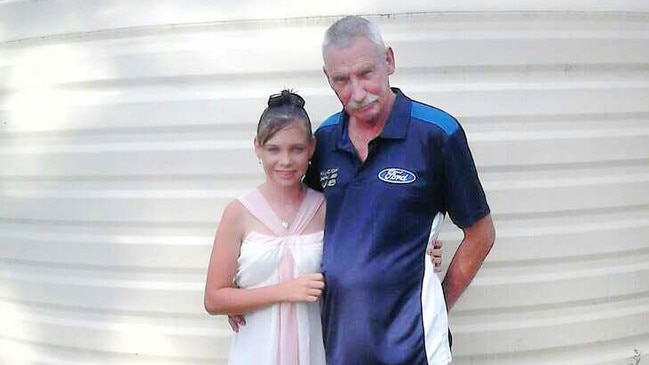
It’s a story of a girl who loved her dad and a dad who made the most terrible, fatal decision.
This is the true meaning behind two numbers on a road toll - told by three people who wanted to speak out for Queensland Road Safety Week.
In 2019, 219 people were killed on Queensland roads. Of those, 93 died in crashes that involved drugs or alcohol. Nearly 50 deaths involved speeding. Another 27 were people not wearing seatbelts.
Nearly 7000 people were seriously injured - spinal injuries, brain trauma, amputations.
When Annette sees these numbers, these bland statistics, she knows exactly what they mean.
first on scene
First on scene
On the afternoon of Friday, June 5, 2015, a Ford Falcon driving along the Rosewood-Laidley Rd lost control on a bend, flew down an embankment and hit a tree.
Someone called triple-0 and the fire brigade arrived on scene soon after.
Some people driving by had stopped to see if they could help.
A police patrol car pulled in, followed by an ambulance. Then more police cars. More ambulances. Soon the road was lined with them.
Kara Tatt was a first-year constable based out of Laidley when she and her partner, Senior Constable Malcolm Clarke, pulled in at the first fatal crash she’d ever investigate.
Terrible things happen to the human body in a high-speed, high-impact crash. She saw the proof of that day.
“We got the call and it was Code 2, so as fast as we could go, basically,” she said.
“Even before we got to the job, I could hear ambulances and fireys.”
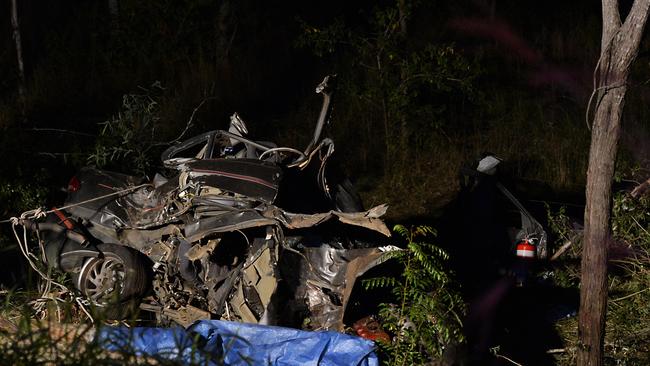
It was an old country road. Back then it had no railing. The car – what was left of it – was in a large, deep ditch.
“And to get down the ditch, I literally sat on my butt and slid down this big, rocky, dirt hill,” Kara said.
The car was no longer a car. It did not look like a car. It looked like a wreck of twisted metal. Like an explosion.
Kara picked her way towards it.
And there he was. A man. On the ground outside the driver’s side of the vehicle.
She saw him and she knew. His injuries were unsurvivable. She could not help him. Nobody could.
“I knew I didn’t need to go to him because he didn’t need medical attention in the condition that he was in,” she said.
A passer-by who’d stopped to help approached. There was a girl in the car, they told her.
She approached the passenger side of that hunk of twisted scrap metal. A girl was sitting in the front seat. Her seatbelt was still on.
“She was upright in the seat. I couldn’t see any damage apart from a busted lip and tooth,” Kara said.
“And she was completely unconscious but I could feel that she had a pulse. She was still alive.”
Kara didn’t move her. It was only a matter of seconds before paramedics were beside her, working to get the girl out of the car.
The young constable looked around the wreckage. There were school books scattered inside. Written on the front was the year level and a girl’s name: Ebonnie Smith.
The paramedics got Ebonnie out of the vehicle and on to a stretcher. They called for a helicopter.
Emergency services responders call it the “golden hour” – and it was ticking away. In a life-and-death situation, the first 60 minutes is crucial. A patient who makes it to a hospital in that time has a much better chance of survival.
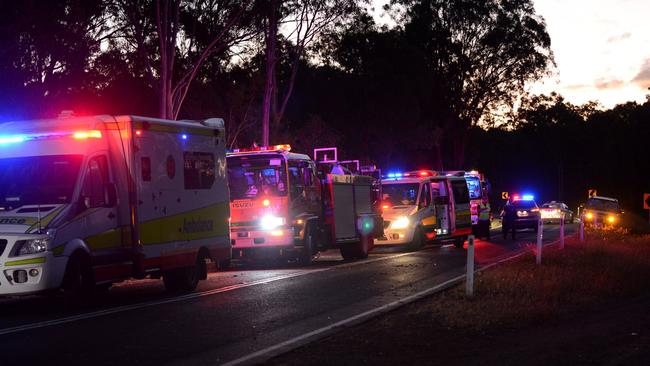
Paramedics worked away on Ebonnie. They were doing their job, trying to save her life. But to Kara, it seemed impersonal; it had to be impersonal.
So she stroked her hair. Took her hand. Talked to her.
“Eb, my name is Kara,” she told the unconscious girl.
“I’m a police officer. I’m here to help you. You’ve been in a car accident. That’s why all the help is here. You are going to have a ride in a helicopter. We’re going to the hospital.”
She stroked her hair, stroked her face. She didn’t move from her side. Didn’t let go of her hand.
When she ran out of things to say, she told her about the blue of the sky. The white fluffy clouds floating above them. Later, she’d wonder whether she’d done that because Ebbie was up there.
“We wheeled her off into the field where the helicopter had landed … and off she went.
“And then I completed the investigation – as much as I could do for it.”
The investigator
Senior Constable Jon Reid doesn’t deal with the same kind of criminal as most of his police colleagues. He doesn’t investigate drug dealers, respond to armed hold-ups or assaults.
A lot of the time, he is dealing with people who have never been on the wrong side of the law. Normal people, “mums and dads”.
Jon is a forensic crash investigator. His job involves the science of the crash – the why and the how. It involves speed tests where skid marks are replicated. It involves blood analysis and mobile phone data. Environmental factors, mechanical factors.
But after the science, there is the human side of an investigation.
It’s Jon’s job to sit down with families and tell them the why and the how.
“Netti,” he told her, “your husband had been drinking.”
He can’t count how many difficult conversations he’s had to have in his years as a crash investigator.
Sometimes he has to tell a driver their mistake has killed someone. He has to tell them that their mistake is considered criminal. That they will be charged and could go to prison.
He sits down with tough, burly truck drivers who have done nothing wrong. But they know the size of their vehicle alone meant death for the other driver. He has comforted them as they’ve cried.
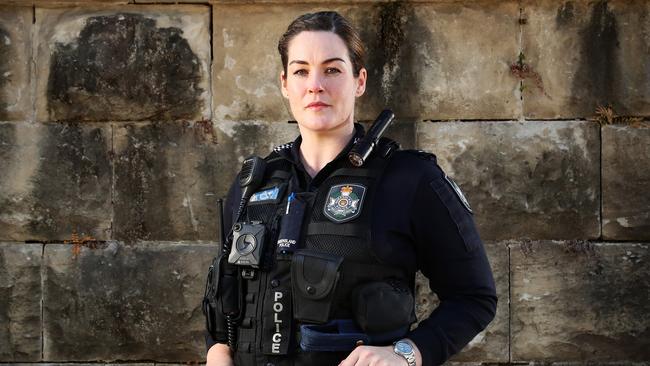
He has investigated more than 100 serious and fatal crashes. But he remembers exactly where he was when the call came through for the crash that killed Brad and Ebonnie Smith.
“I got the call over the phone first and was advised of the crash … that it was definitely one fatal and one looking very, very poorly,” he said.
“It took 15 minutes to get there from the uni. But when I got there, the helicopter had landed. Ebbie – she was out of the car and was just about to be taken into the helicopter, so I never actually saw her.
“It was Kara that I spoke to. She was down at the car.”
Jon believes Kara is a hero. He said anybody who had seen that scene would know that.
“The car itself was horrific. It was very, very badly damaged,” he said.
“It was very, very obvious that it had been in a high-speed crash as it had gone off the road.
“It had hit the driver’s side door first, which instantly caused the fatal injuries (of Brad) and then it spun around and hit dead centre in the front of the bonnet.
“And then it crushed the roof down into the cabin as well.”
The car had hit a large gum tree. A widow-maker.
With Ebonnie in the air on the way to hospital and Brad’s body covered with a tarp, Kara briefed Jon.
You could see it was affecting her but she was rock solid
“She was a real trouper, but you could see she was trembling just oh-so-slightly. But she was doing everything that needed to be done – as were the other officers that were there.”
At the scene, Jon took measurements, photographs and collected evidence.
He didn’t meet Annette – the woman he would still be in contact with five years on – until later.
‘Hello sunshine’
Netti met Brad when she was 19. He was a friend of a friend who turned up to her house for a party.
Of all her friends, Netti was the only one who had her own place. She had a lot of parties in those days.
“He rocked up at my place in this, oh gosh, he was such a cowboy,” she said.
“He had this Land Cruiser ute. You could hear it coming a mile away.
“And I’m a sucker for tight jeans. Tight jeans and no shirt. Or tight jeans and a singlet. Put that on the ugliest man and I would still turn my head.”
Brad was wearing tight jeans and a singlet that day. He had long hair and a cowboy hat.
“And I’m like, hello sunshine,” she said.
“But I was already seeing someone, so it was just bad timing.”
He and Netti became great mates. He looked out for her. He got her out of more than one disastrous relationship – even when he couldn’t have known how bad things were for her.
“You’ve got a bit of trouble happening, don’t ya?” he’d say.
He’d get her out of there, show up at her door, pack up her things.
They got together when she was in her mid-20s. She had two daughters. He didn’t think he was able to have children – and then Ebbie came along.
“When she was born, she was born for her father,” Netti said. They’d have two more girls after that – Gracie-Mae and Brydie. Brad took on Netti’s two older daughters. A house full of girls. A family.
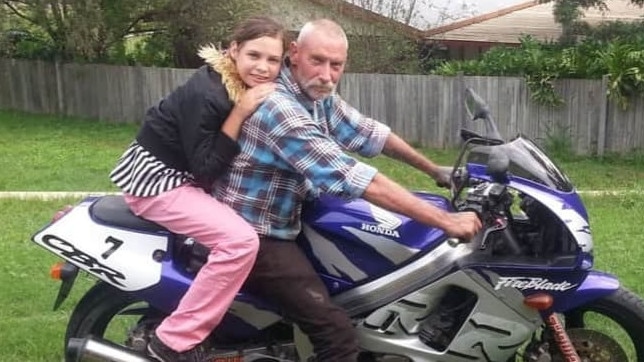
Netti was staying with a friend, 800km north in Rockhampton, when she got the call from Brad. It was early June 4, 2015 - the day before the crash.
Ebbie was missing. They called the police, but their young runaway was found a couple of hours later – safe at her grandmother’s.
“I got on the phone and gave her the biggest lecture,” Netti said. “I told her I didn’t want to be going to her funeral. I ended the call with ‘I love you, bubba’. Usually I just say goodbye and hang up. But that time I didn’t. And she said back ‘I love you too mum’.”
The word spreads
It was a Facebook post that broke the most horrific news she’d ever receive.
Someone sent it to her – a post linking to a story in the local newspaper. A crash on the Rosewood-Laidley Rd. Not far from their home. Police were advising people to avoid the area.
There was nothing to say it was Brad, but she knew it was.
“I started ringing Brad’s phone and he wasn’t answering,” she said.
She’d been talking to him on the phone that afternoon. There was no reason for him not to answer.
Then the photograph appeared. It was online, on the 6pm news.
A crumpled heap of metal. A wheel was the clearest indication it was once a car. In front, against a fallen tree, was a blue tarp.
That tarp found its way into the local paper the following day. She knew Brad was under it. “His tarp was right there, all over the front page,” she said. “That one really shattered me heaps – for a long time.”
The death knock
Kara would have delivered the death message. But they had to be done in person and Netti was hundreds of kilometres from home.
“I actually called her to find out what address she was at,” Kara said. “And she said ‘What’s wrong, what’s wrong?’.
“I just said ‘What’s your location?’. I couldn’t tell her over the phone.”
She organised for officers from Rockhampton to go and see Netti. Your husband is dead, they told her. Your daughter is being flown to hospital.
‘There is no hope’
Netti and three of her daughters made the long dash to the Princess Alexandra Hospital to Ebbie’s bedside.
She was on life support when they arrived, the shock of it all looming large. Netti’s husband was dead. Their daughter was barely alive. “This is where I think some of these doctors could really learn some compassion maybe, because he literally just sat there in front of me and said that she was brain dead and there was no hope and the machine needs to be turned off and all the crap that you don’t want to hear,” Netti said.
“AND instead of letting me take that in, because I didn’t want to hear it, he then said, do you want to donor her?”
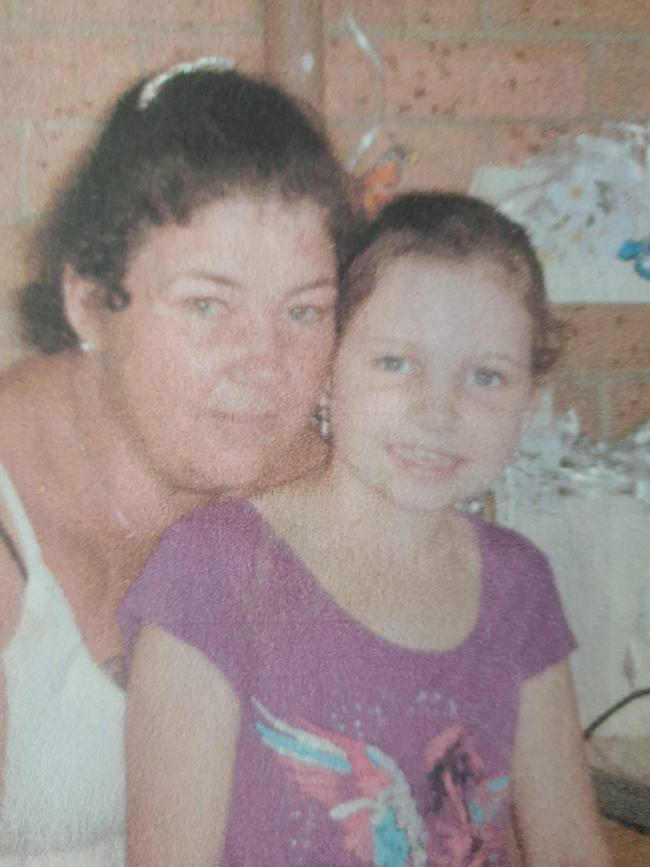
And if Netti regrets anything, it’s that decision she made in shock and grief.
“I’m like, no, no. I’m in defence mode straight away. You’re not touching her. No way,” she said.
“I believe that if they had let me deal with that, if he’d let me take that in for the next 24 hours – or even an hour – before asking me about donating (her organs), I probably would have said yes.
“I really wish that I’d done that. If I was going to do anything different, I really wish I’d made a different decision.”
The last goodbye
Netti sat with Ebonnie as she slipped away, that single tear escaping her dying daughter’s eye. Ebonnie had drawn a heart on her knee that day in school. Netti traced it with her finger, over and over - until it was over. You hear this stuff where people come out of a coma five years later,” she said.
“I had nightmares about that stuff. Oh gosh, what if I turned the machine off and didn’t give her a chance?
“But I got my goodbye from her, so I knew that it was time. She gave it a good try. She was meant to be with her dad.”
It may have been the next day that Netti took photographs of her husband to the police to help with the formal identification process. It would not be like it is on TV. Nobody would lead a weeping widow into a room where a body lies under a sheet. Nobody would gently fold it back to reveal a loved one’s face.
Instead, Jon Reid had put the word out – Netti was not to see her husband. Not under any circumstances. No matter how much she begged. His injuries had been horrific. They did not want her to see him like that, to remember him like that.
“I had to identify him by photos,” Netti said. “I’ve never been in that situation before, so I thought, OK, fair enough.” Brad had a tattoo on his chest – it was Ebonnie as a baby. Netti had photographs of the tattoo that police would use to confirm his identity.
She didn’t know the extent of his injuries then. But when she handed his photographs over, one officer said: “Oh, is that what he looks like?”
“I didn’t think anything of it at the time,” she said.
She was there for me
Kara remembers meeting Netti that day. “She came in to the police station and saw me. She just walked in the door. I knew who she was straight away,” Kara said.
“She gave me the biggest hug. Like, the strongest hug I’ve ever had in my life. I can still feel it right now. She said thank you so much for being with my girl.
“I want to know everything. I want it all. Don’t leave anything out.”
Netti knows what Kara did for her dying daughter. “She did her job, but she went the extra mile,” Netti said.
“No-one told her, hey, go sit with this kid. Nobody told her that.
Kara held her hand from when she was getting cut out of that damn car, right until she was put in the chopper.
“How the hell did I get so lucky to get somebody amazing like that? She did my job.
“She was there. She mothered her. How do you thank someone for that?”
Netti asked Jon Reid for honesty and he gave it to her.
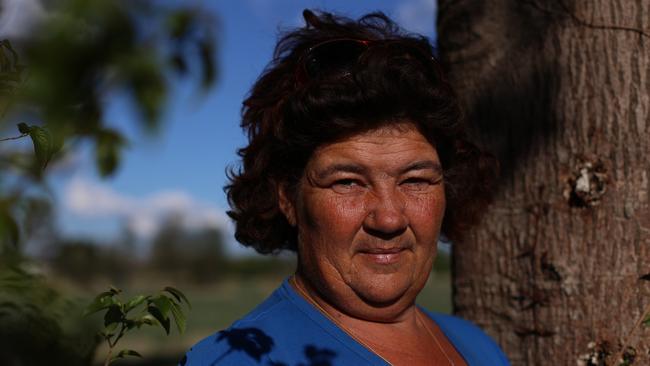
He told her Brad had been travelling at 136km/h when he lost control of the car. He told her Brad’s blood alcohol reading was consistent with having drunk the nine beers missing from their fridge.
He told her, under no circumstances, would she see her husband’s body. He told her he would not let her hold his hand.
“I told Jon 100 times thankyou. Thankyou for being honest. Thankyou for telling me everything,” Netti said.
“Every time I went to him and said, I want to know now, I want honesty, I want the rawest, crappiest detail, he was gentle but honest.
“And that made me find a confidence that I’ve never had. My grandfather always said to me, you’ll never learn if you don’t ask – and Jon said the same damned thing.
“And I thought, that’s pretty good advice.”
Memento mori
Kara put on her uniform and went to the funeral. She wasn’t sure if it was the right thing to do, but it felt right at the time.
Netti saw her there. She showed Kara the tattoo she’d had done to honour her daughter. The date of her birth and death and a pair of angel wings. Later, Kara would spot a tiny angel figurine at a store. It reminded her of Ebbie, of that tattoo. So she bought it. It’s been in her police bag for five years.
“You have to have that empathetic, caring nature,” she said of her job in the police.
“If you don’t, you’re just a robot. The experience I had with Netti is definitely an experience I’ve never received in the service.
“She really held on to that hug and just valued what we did. I just wish I’d had that hug for other reasons and not the circumstances that we were in.”
A couple of years before Brad and Ebonnie died, a friend of Netti’s lost her former partner and their children in a crash.
Another driver was at fault. It’s easier when you can blame a stranger, Netti said. When the blame doesn’t rest with the person you love.
“When it’s a person you love and they take one of yours because of their stupid actions, that’s harder,” she said. “You love them so much but you want to hate them, you want to be angry at them.
“I’ve felt every emotion.
“I love him dearly. And that’s something I want to get across, that hey, you know, the people you love, they stuff up. I am drilling my kids big time already about drink driving.”
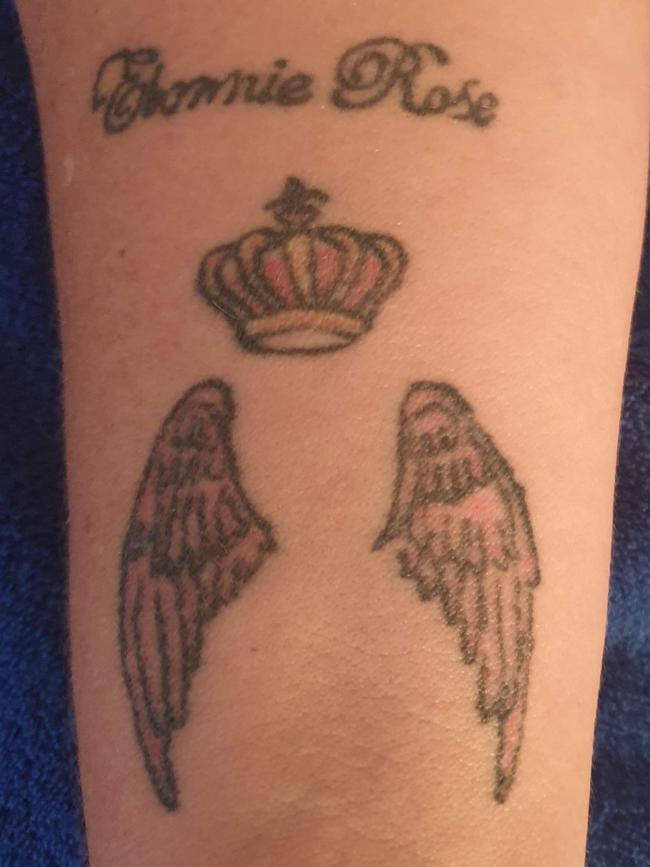
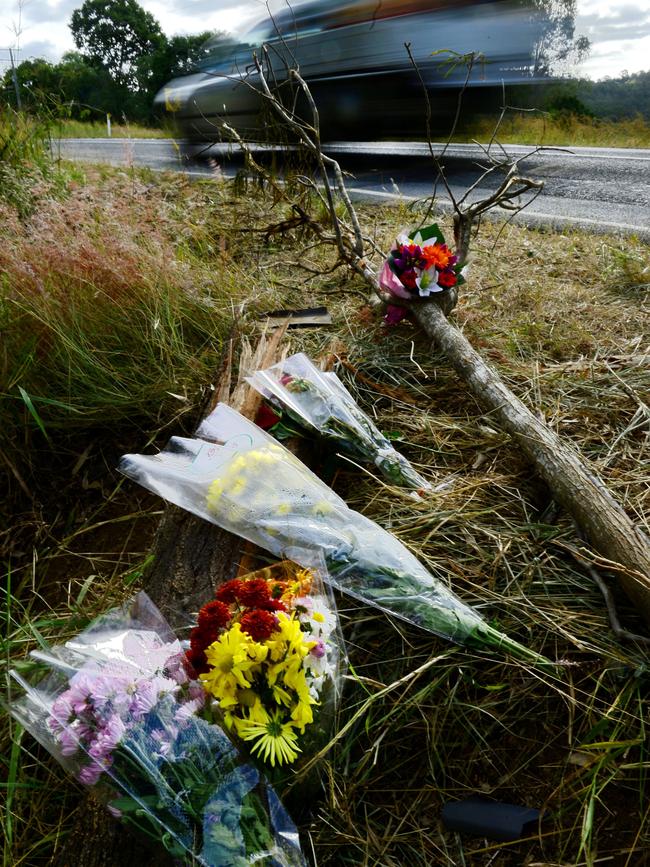
They talk about it sometimes - the young woman she would have grown to be.
Ebonnie Smith, fiercely independent. Half princess, half tomboy.
She loved wearing pretty dresses and riding horses. She loved her dad. They’d spend hours together working on his car. “Would she have got herself together and got a job?” Netti said. “Or would she have gone, stuff it, and kept being a free spirit like she was? And then you wonder, what would she look like now?”
An amazing copper
June this year marked the fifth anniversary of Brad and Ebonnie’s deaths. Soon after, Netti and her daughters celebrated Ebonnie’s 18th birthday party.
They watched My Girl, as they do every year, because it was her favourite movie. They used to let her watch it every year for her birthday.
But the anniversary gave Netti an opportunity to talk to Kara and Jon again.
It gave her an opportunity to thank Kara properly.
“I have held on for five years to tell her thank you. I told her I loved her for doing my job that day.
“It was so healing. It was my last thing that I set out to do.
“To know that Ebbie touched Kara in such a way, it gives me something inside that says, you know what?
“My girl has not just changed my life, she’s changed Kara’s life in a matter of what, an hour?
“And she didn’t even get to know her.
“But in her last moments she touched this person who is now an amazing mum and an amazing copper.
“It just blows me away.”
